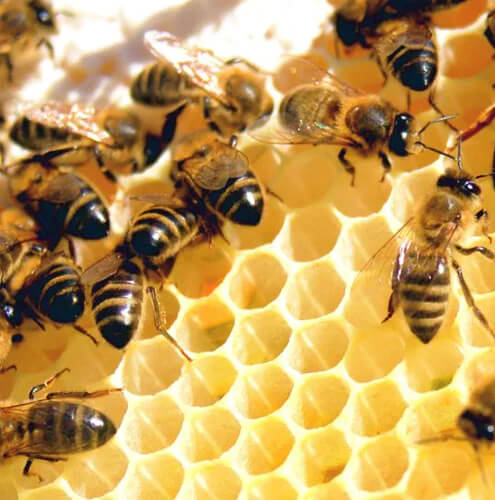In the lush tropics, where Hawaii's shimmery flora dances in the breeze, an unsung hero arranges a delicate balance that sustains the islands' natural richness–the honeybee. Often overshadowed by Hawaii's sun-kissed beaches and azure waters, the vital role of these tiny pollinators in the island's ecosystem is a story as sweet as the nectar they gather. Journey with us as we explore how honeybees in Hawaii go beyond simply sweetening our lives to impacting the very fabric of the ecosystem.
Hawaii's honeybees are renowned for producing some of the world's most unique and delectable honey varieties. From the caramel notes of Macadamia Nut Honey to the robust flavors of Lehua Honey, the production of honey isn't merely a treat; it's a sign of the extraordinary array of flowers that pepper the islands. But their importance in Hawaii transcends tastes–these industrious insects are crucial pollinators. They flit from bloom to bloom, cross-pollinating plants and ensuring the perpetuation of native flora, a task that directly impacts 90% of the world’s flowering plants and one-third of the world's food.
Hawaiian honeybees sustain a veritable rainbow in their pollination endeavors. Their aptitude for cross-pollination is responsible for the bursts of color that adorn the landscape, a stunning reflection of their tireless labor. Through their contribution, species like the vibrant 'ōhi'a lehua and the majestic Koa tree survive and thrive, casting their splendor across the islands.
Beyond the flashy festival of colors and tastes, honeybees play a pivotal part in Hawaii's biodiversity. Their role as pollinators has a profound trickle-down effect, supporting a diverse range of our environment's inhabitants. With their disappearance, whole ecosystems could buckle under the weight of reduced genetic diversity and the loss of keystone species.
Honeybees in Hawaii are stalwart defenders of native plant species, many of which are endemic to the islands. Their cross-pollination efforts facilitate the continuation of plant life and support the native fauna that rely on these plants as a food source. This relationship underscores the significance of honeybees in maintaining the intricate balance within the natural world
The buzz about Hawaiian honeybees is about more than just their positive impact. Invasive species and climate change present formidable challenges, threatening their populations and the ecosystems they support. The intruding varroa mite, for example, has been decimating bee colonies, posing a grave risk to their critical pollination work.
Hawaii's honeybees are valiantly fighting an uphill battle against invasive threats and habitat loss. Climate change has led to shifts in flowering periods, disrupting the bees' feeding habits and life cycles. Proactive measures and a renewed focus on conservation are needed to secure the future of these ecosystem engineers.
The story of Hawaiian honeybees isn't just about the Hawaii honey they provide; it's a narrative of resilience and symbiosis. In the face of mounting challenges, these winged workers continue to fulfill their vital role, linking the elements of an intricate web of life. Their presence is not just a benefit but a necessity for the survival and vibrancy of Hawaii’s ecosystem.
We’ve learned of the pivotal part played by Hawaiian honeybees; now it's time to act. Explore the unique and diverse range of honey products Hawaiian Rainbow Bees offers as a sweet indulgence and to support local bee populations and the ecosystem they sustain. Bees are the unsung heroes of Hawaii, and it's our duty to ensure they continue to flourish in the islands' paradise.
In the vibrant tapestry of Hawaii’s ecosystem, honeybees are the golden threads weaving a future rife with color, flavor, and sustenance. It's a reality we must ardently protect and champion. The next time you savor a spoonful of Hawaiian honey or admire the blossoms on a hike, give a silent nod to these wondrous creatures. After all, their humble work might just be one of Hawaii's greatest treasures.





Comments